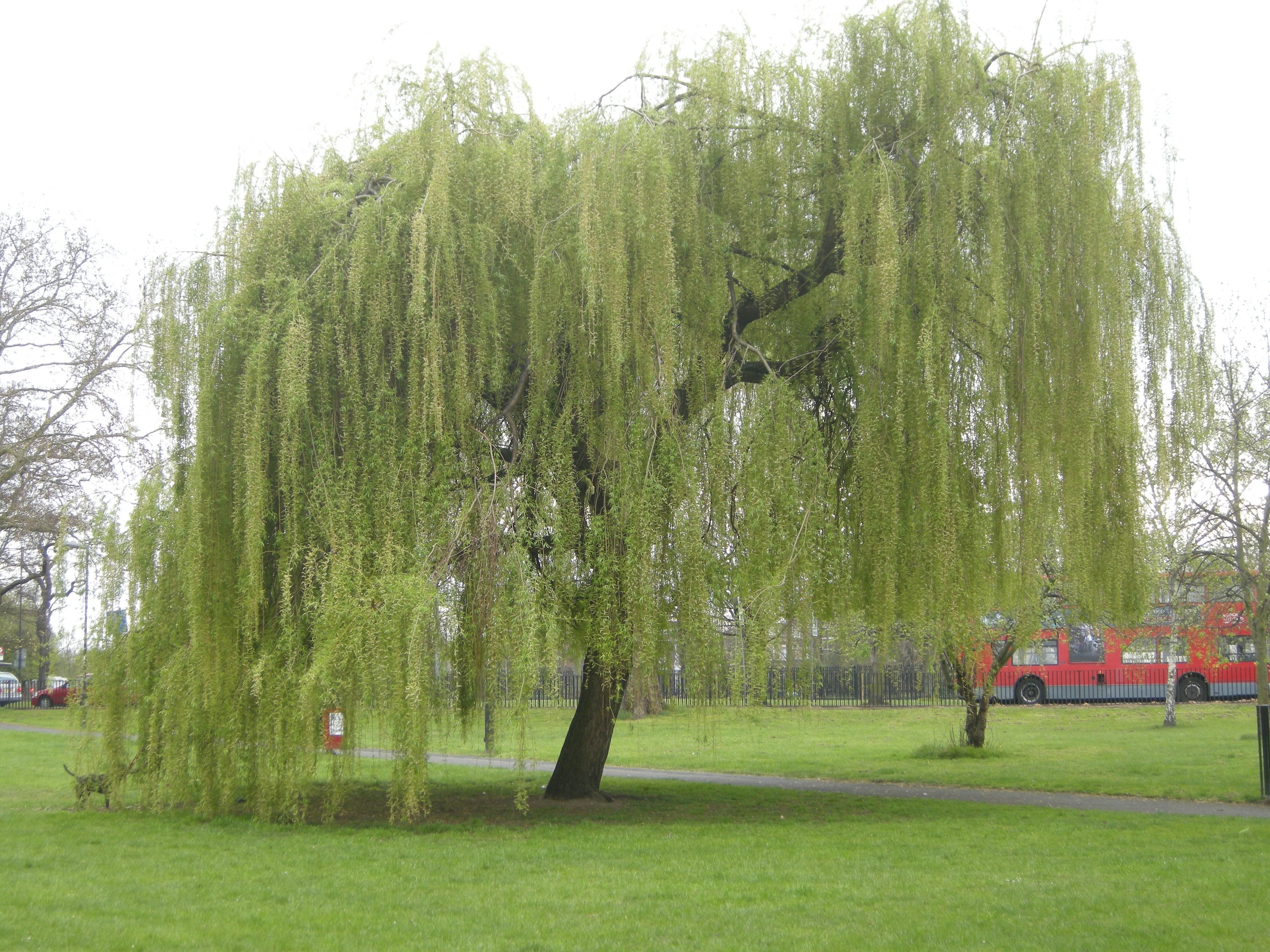Salix babylonica
True weeping willow (Salix babylonica )
The Real weeping willow (Salix babylonica ) is a plant of the genus willow ( Salix) in the family of the willow family ( Salicaceae ). It is also referred to their origin as Chinese or according to their botanical names as Babylonian weeping willow.
Features
The Real weeping willow is reached a tree with spreading branches, the stature heights of 10 to 20 meters. The branches are long rod- shaped, thin, light gray, bleak and overhanging.
The leaves are short-stalked, lanceolate, acuminate to 17 centimeters long and 2.5 centimeters wide, long, and at the bottom just running together. The leaf margin is serrated cartilaginous. The top is dark green, the underside gray-green, both sides are bare. The petiole is 5 millimeters long. Stipules are rarely present.
The Real weeping willow, like all willows, dioecious getrenntgeschlechtig ( dioecious ), but there are with her as an exception occasional female flowers, which appear in the male catkins. The kittens are 4 to 5 inches long, cylindrical and pendulous. Male kitten hold flowers with two bare stamens. Female kittens have flowers that contain a bare ovary and thick scars. The support sheet is solid and bright, its outside is loose hairs, the tip is not bearded. Of the two male nectar glands, the rear elongated and club-shaped, the anterior small. The female nectar gland is the rear nectary.
The flowering season lasts from April to May
Occurrence
The Real weeping willow comes from East Asia. Here she comes originally from China and Japan to East Turkestan. Today it is widely used as an ornamental tree world. It grows on damp and loose soil to water.
Hybrid
The Real weeping willow (Salix babylonica ) bastardiert with the white willow (Salix alba) as the crack willow (Salix fragilis ). The scientific name for the hybrid Salix fragilis x Salix Salix x babylonica is pendulina Wenderoth, for the hybrid Salix alba x Salix Salix x babylonica is sepulcralis Simonk. Both are also trauerwüchsig ( Meikle 1984, Hunter 2000). Salix x sepulcralis in Central Europe the most common weeping willow since the system Genuine weeping willow is frost sensitive and easily auswintert. Compared with the hybrids with the crack willow hybrid is preferred with the white willow in the garden and landscaping, because he - inherited from the White Willow - has a dense silvery underside hair. It is also a form of mourning White Willow Salix alba ' tristis ' in trade and planted in many cases ( Hunter 2000).
Documents
- Urs Jäger: determining willow (Salix L.) and their hybrids in Sachsen- Anhalt, in: Communications on floristic mapping in Saxony- Anhalt. Volume 5, pages 139-159, 2000.
- R. D. Meikle: Willows and Poplars of Great Britain and Ireland. BSBI Handbooks 4 London 1984, ISBN 0-901158-07-0.
- Gunter Steinbach (ed.): shrub shrubs ( Steinbach nature guide ). Mosaik Verlag GmbH, Munich 1996, ISBN 3-576-10560-3.










